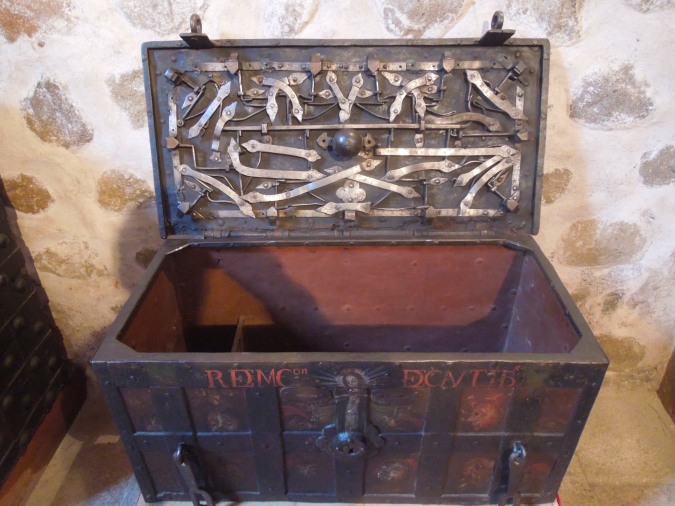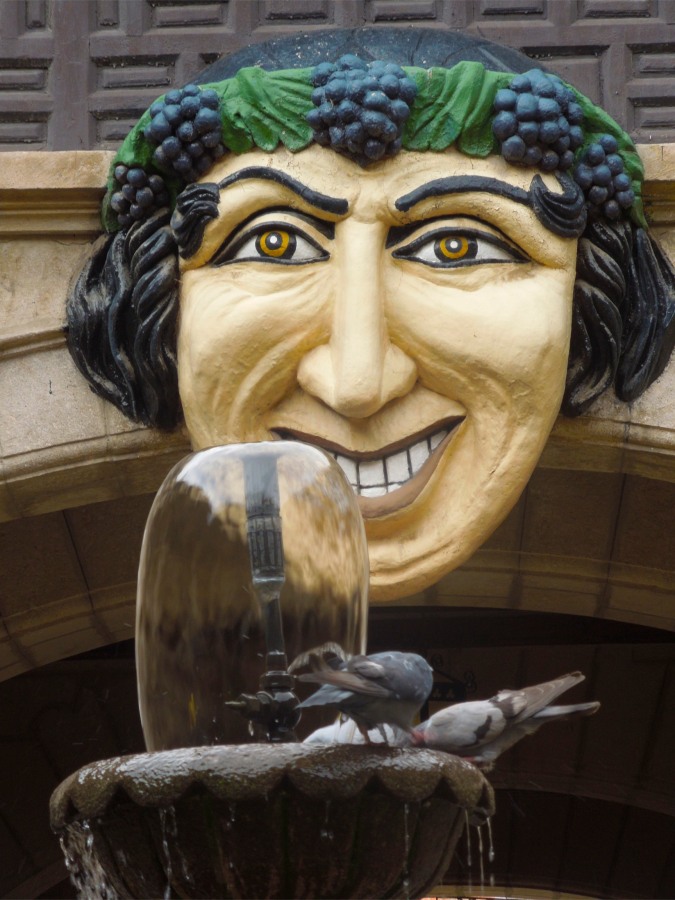The Casa Nacional de la Moneda de Bolivia in Potosi is an imposing building. From the moment you see the huge wooden doors, complete with large metal studs, you know it is anything but ordinary. The whole building is constructed like a fortress, for this was the mint established by the Spanish to process the silver they were ripping out of the mines in the Cerro Rico (Rich Mountain). Silver which made Potosi famous and Spain rich.
Founded in 1759 to replace to the original sixteenth-century mint, the Casa de la Moneda continued to function as a mint until 1951. Today it is an excellent museum telling the story of the mint and, more poignantly, the history of the destructive force of Spanish greed on the peoples of the Andes. Potosi held the largest silver deposits in the known world, and its discovery in the 1540’s was a godsend for the Spanish and an unmitigated disaster for the entire Andean highlands.

The wealth of the silver mines in Potosi was legendary in sixteenth- and seventeenth-century Europe, so much so that the saying ‘to be worth a Potosi’, meaning to be worth a fortune, was in common usage. This was the silver the Spanish shipped across the Atlantic from the equally legendary Spanish Maine, where English privateers (pirates) in the employ of the English Crown preyed upon Spanish silver galleons.
While that part of the history of Potosi is still being glamourised by Hollywood in the Pirates of the Caribbean franchise, there is a much darker and more terrible history that remains largely untold.


The Spanish Crown, mine owners and religious orders grew rich over the three hundred years which followed the discovery of silver in Potosi, but this came at a terrible price in human suffering. The Spanish authorities pressed millions of indigenous Andean peoples into slavery to work in the mines.
So deadly were the working conditions of the mines the Spanish were forced to ship African slaves to Potosi to supplement the rapidly dwindling workforce. It is estimated that between eight and ten million people died in the appalling conditions in both silver and mercury mines or the processing industries. This genocide is as much the history of the Casa de la Moneda as the fascinating history of the mint itself.



If the mines were deadly places to work, the mint itself wasn’t much better. People and animals were worked to death: a donkey had a life expectancy of only three or four months once it arrived in the mint. You can still see the marks in the floor where the donkeys walked endless circles powering the machines.
Today the museum also contains many original and copies of coins minted during colonial and Republican times. There are also numerous artworks and silver items that were created from the wealth of Potosi. The museum also contains this amazing treasure chest which was used to ship silver to Spain. The elaborate locking mechanism was designed to frustrate anyone who stole the chest.




So important were the silver mines of the Cerro Rico that religious art reflected this by incorporating both Christian symbols and pre-conquest religious imagery into artworks – unmistakable in both of these paintings is the shape of the Cerro Rico.


There is also a section of the museum given over to minerals, including this giant Bolivianite – a semi-precious stone of purple and yellow hues found only in Bolivia.

The museum is a must for anyone interested in the history of Bolivia, or wanting to know more about the colonisation of the region and its impact upon the indigenous population of the Andes, as well as the influence Potosi silver had in Europe. The one unexplained feature of the Casa de la Moneda is the odd looking sculpture that greets you on arrival: a giant grinning head surrounded by grapes called El Mascaron. While theories abound, no one other than Eugenio Moulon, the Frenchman who hung it there in 1865, really knows what its true meaning is…answers on a postcard please.


So many interesting and beautiful stories and pictures. Wonderful
Thank you, its much appreciated. Bolivia is a fascinating and beautiful country and the photos really do take themselves.
I was in Potosí a couple of weeks ago and I agree – the silver mint museum was beautiful! Great photos.
It’s a great museum, must be one of the top 3 or 4 in the country – not that I’ve been to them all!
It must have been a terrible dark time – after all the murders, I’m amazed that the people remain so open- hearted. It is testimony to their fine spirit.
The conditions in the mines were horrific. People were forced to spend a week underground mining and the air was full of poisonous fumes. Sadly things haven’t improved much to this day and thousands still work in the mines in similar conditions today.
From memory, there’s some pretty awful sulphur mines…. 😦
Reblogged this on bearspawprint.
Thank you for the reblog, much appreciated.